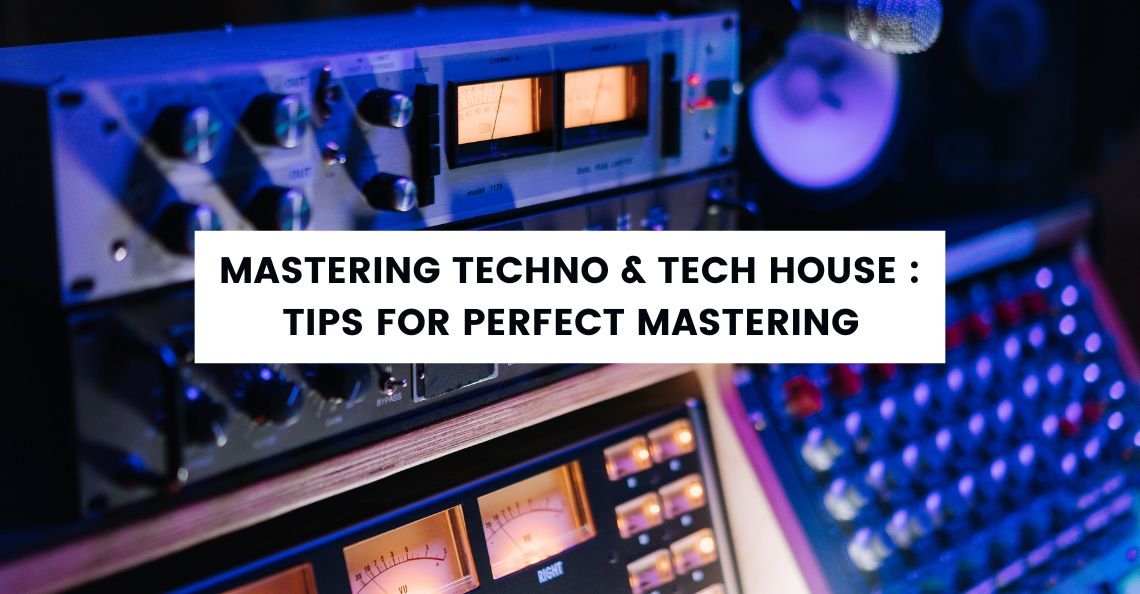
Music mastering is the final and most crucial step in the music production process. Whether you’re a beginner artist or an experienced producer, understanding the art of mastering is essential to ensure that your music sounds polished, professional, and ready for distribution. In this ultimate music mastering guide, we’ll dive into everything you need to know about music mastering, including its importance, the mastering process, and key techniques to enhance your tracks.
What is Music Mastering ? 🎧
Music mastering is the process of preparing and optimizing a track or album for distribution. It involves adjusting the final stereo mix to enhance its sound, ensuring it translates well across all playback systems, and meeting industry standards. Music mastering ensures that your music sounds consistent and balanced, whether it’s being played on high-end speakers or small portable devices.
So, how to master a song effectively? The first step is understanding what’s involved in the process and why it matters.
Why is Music Mastering Important ? 🎼
Mastering plays a pivotal role in the overall quality of your music. A well-mastered track has the potential to:
👉 Enhance Sound Quality : Music mastering refines the sound of a mix, making it clearer, louder, and more cohesive. By addressing issues like EQ imbalances, distortion, and noise, mastering brings out the best in your music.
👉 Ensure Consistency : If you’re releasing an album, mastering ensures that all tracks have a consistent sound in terms of loudness, tone, and dynamics. This creates a seamless listening experience for your audience.
👉 Optimize for Different Platforms : Whether you’re releasing music on streaming platforms like Spotify, Apple Music, or on physical formats like vinyl or CD, mastering ensures your tracks sound great on any medium.
👉 Prepare for Distribution : Music mastering prepares your music for various formats, making it compatible with the requirements of different distribution channels.
The Mastering Process : Step by Step 🔧
Now, you might be wondering, “How to master a song the right way?” The mastering process involves several key steps:
👉 Pre-Mastering Review : Before starting the actual mastering process, it’s essential to listen to the track thoroughly. This involves checking for any issues in the mix, such as excessive reverb, distortion, or unwanted noise.
👉 Equalization (EQ) : EQ is used to adjust the frequency balance of a track, ensuring it sounds clear and well-defined. Proper EQ removes any muddiness, boosts clarity, and enhances the overall tonal balance.
👉 Compression and Limiting : Compression controls the dynamics of the track by reducing the difference between the loudest and quietest parts. Limiting is applied to prevent clipping and ensure the track’s volume reaches the desired level without distortion.
👉 Stereo Imaging : This step widens the sound, giving it more space and clarity. A balanced stereo image ensures that elements of the mix are placed properly across the left and right channels, avoiding a muddy or unbalanced sound.
👉 Finalization : The final step includes checking for any imperfections like unwanted noise, clicks, or pops. Once everything sounds just right, the track is rendered into the desired file format (usually WAV, FLAC, or MP3) for distribution.
How Many Times Should You Master a Track ? ⏱️
When mastering music, you don’t need to go over the process multiple times for each track. Ideally, mastering should be done once per final version of the track. However, it’s important to be meticulous, ensuring each aspect of the track is perfect before finalizing it. If you’re working on an album, mastering each track individually and then adjusting for overall album consistency is key.
Repeated sessions of listening and fine-tuning during the mastering process can improve the final result. But mastering a track multiple times unnecessarily can lead to overprocessing and loss of dynamics. In general, two to three careful passes for fine-tuning adjustments should suffice for mastering.
Mastering Tools and Software 🖥️
There are various tools and software available to help with the mastering process. Some popular options include:
👉 iZotope Ozone : A comprehensive music mastering suite with features like EQ, compression, and stereo imaging.
👉 Waves Plugins : Known for their high-quality sound, Waves offers a variety of mastering plugins that help shape the final sound.
👉 Adobe Audition : A popular DAW (Digital Audio Workstation) that provides tools for mastering, including EQ, noise reduction, and multi-band compression.
Tips for Effective Music Mastering 🎶
👉 Listen on Multiple Systems : After mastering, check your track on different devices (headphones, speakers, car audio) to ensure it sounds good everywhere.
👉 Avoid Over-Limiting : While it’s tempting to make your track as loud as possible, over-limiting can lead to distortion and loss of dynamics.
👉 Take Breaks : Mastering requires careful listening, and prolonged exposure can cause ear fatigue. Take regular breaks to maintain fresh ears.
Conclusion 🎶
Music mastering is a vital step in the production process that can significantly impact how your music is perceived. By understanding the key aspects of mastering and using the right tools, you can ensure that your music sounds its best, no matter where it’s being played. Whether you choose to master a song yourself or hire a professional mastering engineer, this guide has provided you with the knowledge to take your music to the next level.
So, how to master a song effectively? Pay attention to the steps outlined, take your time, and always review your work to ensure the highest quality. If you’re ready to master music, remember that quality matters—invest time in the mastering process, and your tracks will shine on every platform!




